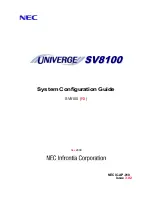
Chapter 4: Legal and regulatory information
Compliance with radio regulations
Page 4-72
European Union compliance
The PTP 550 complies with the regulations that are in force in the European Union.
Warning
This is a Class A product. In a domestic environment this product may cause radio
interference, in which case the user may be required to take adequate measures.
If a PTP 550 unit is interfering with radio or television reception (this can be
determined by turning the equipment off and on), attempt the following corrective
actions:
•
Realign or relocate the antenna.
•
Increase the separation between the affected equipment and antenna.
•
Connect the ODU and PSU power supply into a power outlet on a circuit different
from that to which the receiver is connected.
Contact Cambium Point-to-Point for assistance.
5.4 GHz European Union notification
The PTP 550 product is a two-way radio transceiver suitable for use in Broadband Wireless
Access System (WAS), Radio Local Area Network (RLAN), or Fixed Wireless Access (FWA)
systems. It is a Class 1 device and uses operating frequencies that are harmonized throughout
the EU member states. The operator is responsible for obtaining any national licenses required
to operate this product and these must be obtained before using the product in any particular
country.
Hereby, Cambium Networks declares that the PTP 550 product complies with the essential
requirements and other relevant provisions of Directive 1999/5/EC. The declaration of
conformity may be consulted at
the support website (see
page
.
5.8 GHz European Union notification
The PTP 550 is a Class 2 device as it operates on frequencies that are not harmonized across
the EU. Currently the product may only be operated in the countries listed in
. However, the regulatory situation in Europe is changing and the radio spectrum may
become available in other countries in future. See
operator is responsible for obtaining any national licenses required to operate this product and
these must be obtained before using the product in any particular country.
Caution
This equipment operates as a secondary application, so it has no rights against
harmful interference, even if generated by similar equipment, and must not cause
harmful interference on systems operating as primary applications.
















































